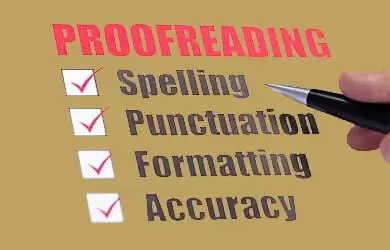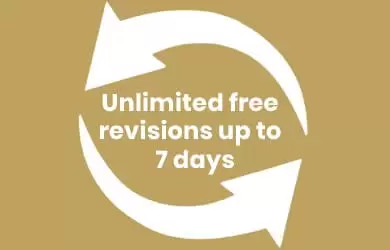African Dilemma, the situation in Sierra Leone
I have been struggling with this question since I started my paper. Usually a question will guide the direction of my paper. Unfortunately, I have been left with more questions than answers. After many readings, I have had a chance to look into the crisis of Sierra Leone and the diamond trade more specifically. The more I investigated the roots of the conflict and crisis, the more I have come to understand the reasons for the outcomes. It still leaves me with the aching question, why. Why has there been so much death? Why has it not stopped? Why did it begin? How did it begin? Who is to blame? Will it ever end? These are very important questions, some of which I myself cannot answer.
This is a very emotional subject for me and I will do my best to put aside all personal biases. I will first start with a background on the political situation of Sierra Leone. The civil war in Sierra Leone and its surrounding countries did not just miraculously happen. The struggles in Sierra Leone reflect the struggles of many other countries facing the same economic and political strife. My main concentration in this section will be on the past. I will than explain the political situation in Sierra Leone, how it escalated to be as aggressive as it is and has been, how the situation is right now and where it might be going.
Secondly, I will discuss the situation in Sierra Leone concerning the diamond trade. There has been a power struggle over the conflict of “blood diamonds” in Sierra Leone and surrounding areas for many years. I will show that, while the struggle over the diamond trade has elongated the conflict and has been the predominant factor for civil war in Sierra Leone, the political situation has actually been the root cause of the struggle. Thirdly, I will give some insight into the impact the raging war has had on the economy and the people of Sierra Leone. The struggle for power, with a by-product being greed, has greatly affected the woman and children. Extreme violence has been the product of this greed. Fourthly, the situation in Sierra Leone has been a devastating one. The political and economic crisis has been almost too much to overcome. There is hope. There is always hope. The Revolutionary United Front and the Government of Sierra Leone have settled upon a peace agreement. I will discuss the agreement briefly and explain the certain pros and cons.
British colonization of Sierra Leone was a devastating blow. Many problems stemmed from colonialism. The infliction of slavery, disease, currency, and religion were just a few of the factors that played into the early destruction of Africa. There are those that say Africa never had a chance. They were doomed from the start. This is what I will refer to as the “snowball effect”. The situation in Africa never really had a chance to recover. To understand this, we must look at the meaning of colonialism briefly. Colonialism is the control by one power over a DEPENDENT area or people (6). The dependence of Africa was due to an oppression of a lesser state by a more powerful state. My question is, “how did that area or people become dependent?” In order to understand this, we must look at Africa as an example. How did Africa survive before colonialism? Were the tribes of Africa hungered? Where they clothed properly? Were they serving the “white man”? The answer to all these questions are, no! Africa was independent. In other words, they were dependent only upon themselves. They were a rich culture according to their own needs. The British than came along and inflicted their ways upon the people of Africa. Since the African ways of survival and life were different from those of the British, Africa was deemed “dependent” on the British and the British were to show Africa a “better and new life”. This is how the “snowball effect” started.
This brings me to my next point. The political situation in Africa was and has been a never-ending battle amongst the political groups, the people of the state, and the revolutionary groups. Sierra Leone is a case of political greed and corruption.
In 1961, Sierra Leone gained its independence (1). Before the independence of 1961, there was a somewhat peaceful coexistence among the fourteen ethnic groups consisting of different religions (1). Along with independence came a new government. There were two main parties in Sierra Leone. In 1961, Sir Milton Margai ran the Sierra Leone Peoples Party (SLPP). It was not until 1967 Siaka Stevens, leader of the All Peoples Party (APC), went into power. Here is where the greed and corruption enters the state. When Siaka Stevens was elected into power, he created mass hysteria amongst the people. He destroyed people’s faith in the state government. During his years serving as leader of Sierra Leone, chaos and corruption started to peak. Stevens adopted a new republic constitution and eventually adopted a single-party constitution (1). This made it very hard and intimidating for anyone to oppose his party or leadership. Stevens’ reign also marked the beginning of the “big bully” era. This happens when someone, having more authority or power over a certain individual or situation, uses their power to get the results they desire. Stevens is a perfect example of this. He used military violence and political tyranny to stay in power (2). The military that served Saika were actually trained guerillas. What was left of a democracy when Saika took over power in Sierra Leone had but been forgotten. The government, now, was in the form of a dictatorship. He oppressed the people and he corrupted the army, most politicians, police, and the judicial system until there were nothing left but mere ideas of right or wrong behaviour (3).
Is the political problem in Sierra Leone the reason for civil strife and war in this country? It may very well be. The facts seem to point in the direction of politics. One of the main problems with the assumption that what happened was because of one man, is quite extreme. On the other hand, it only takes one earthquake to shake a city or one voice to make a sound. Hope and trust is something that can be destroyed or ruined at the drop of a hat.
One of the main causes for such corruption in the political realm was the richness of minerals in Sierra Leone. By minerals, I mean diamonds. The mining of diamonds in Sierra Leone has been one of the most devastating and corrupt forms of gaining wealth. There has been a constant struggle over control of the diamond fields for many years now. Originally, the government leaders of Sierra Leone had been dominating the diamond trade for many years for personal gain. There has since been a shift in power over these diamond fields with the invasion of Sierra Leone by the RUF. The Revolutionary United Front (RUF) has dominated control over the trade of diamonds in Sierra Leone.
The RUF began a rebel war in 1991. Foday Sankoh led the RUF into Sierra Leone to take control over the diamond fields. The RUF stated its purpose was to overthrow the government, demanding fair elections and social and economic justice (4). When we look a little farther into the past, we see the RUF’s motivation was something completely different. Stevens imprisoned Sankoh, leader of the RUF, in the 1970’s. Sankoh sought revenge for many years. With the forming of the RUF and Charles Taylor, leader of Liberia, acting as mentor and banker for the RUF, Sankoh’s revenge could be implemented (3). This is why and how civil war in Sierra Leone erupted; power, greed, revenge, and coercion. This is where the term “conflict diamonds” or “blood diamonds” comes from. They are diamonds, which finance the raging wars of the rebels.
Diamonds in Sierra Leone have become more of a burden than a blessing. It is the number one leading resource in the country with no benefit for the people of Sierra Leone. Less than 10% of the diamonds mined in the fields are processed through the government (1). The rest are smuggled through Liberia, over 300 million dollars worth annually. The diamond trade has also brought organized crime to Sierra Leone. With organized crime comes smuggling of diamonds, trade of small arms and of course, the usage and selling of drugs. The government is not the only ones to blame or the rebel groups.
How have these diamonds been reaching across the world for us, in Western society, to support these brutal wars? The answer is weak state regulations and the help of outside companies such as De Beers and Antwerp. De Beers has purchased diamonds from war zones for many years and has supported the diamond trade in Sierra Leone specifically. In regards to Antwerp, 75% of all of the world’s rough diamonds pass through Antwerp with no regulation on where the diamonds come from (4).
Accompanied with these diamonds, has come unimaginable devastation. The civil war that has accompanied the illicit diamond trade has claimed thousands of lives in Sierra Leone. Over 75,000 people have been killed and over 2 million have been displaced (4). These are only the numbers concerning Sierra Leone.
We can see that the wars in Sierra Leone are not necessarily fought for political gain or victory, but instead to engage war over the lucrative and profitable diamond trade. What has surprised most people has been the role of NGO’s. The RUF used NGO’s to purchase arms and medicine by use of the illicit diamond trade (5). Who is on whose side anymore? This is a hard question to answer when trying to peer through a looking glass when “corruption” is blocking the view.
The civil war has brought much strife and oppression to the people of Sierra Leone. How does civil war come about? Let us look at this recipe for civil war.
Internal Strife Desperate Living Conditions Social Unrest
CIVIL WAR (9)
Civil war is usually a desperation tactic. It is fuelled by a power unattainable through other means. In the case of Sierra Leone, that unattainable source is diamonds. The political strife in Sierra Leone has been undermined by this struggle for power and wealth. Through this struggle for power and wealth, many lives have been destroyed. Of the lives that have been destroyed, the violence against women and children has been most severe.
In the 1980’s, the Sierra Leone government had expired all funding to the education system (3). Schools were shut down and kids were forced on the streets to fend for themselves. A financial graph of the expenditure of funds by Sierra Leone in association with GNP in 1980. These children became the main resource for the RUF army. Here we have understanding of the phenomenon, “child soldiers”. One of the largest travesties for these young children was the witnessing of the butchering of their families. The RUF would manipulate these “child soldiers” with drugs and alcohol, adapting them to the ways of a soldier. Eighty percent of rebel soldiers were between the ages of 7 and 14 years of age. Over 4500 children have been recruited by the RUF (2). The violence against children and women has not stopped. Amputation of the citizens of Sierra Leone is the
This little girls face was crushed by the trademark of the RUF army. There are a few reasons for this brutal act of inhumanity. One is to discourage the faith in the government. Another reason is to inflict fear and chaos in a community. Thirdly, amputation is used to prevent those people from taking up arms against the RUF.
The most sickening form of civil war in Sierra Leone is the rape of young girls and women. The raping of woman is so brutal that young male soldiers are forced to rape these women to prove their worth and toughness as a soldier of the RUF. In many cases, the fathers are forced to watch his daughter raped; the brothers forced to watch his mother raped. It is the most inhumane violation of human rights. These women are being exposed to sexually transmitted diseases, most common of which is AIDS/HIV (2). Not only are the RUF killing these civilians with guns and ammunition, but they are also slaughtering these people with their own inability to differentiate between wrong and disgusting.
This violence against women and children is only the tip of the iceberg. The violence has escalated and the United Nations Mission in Sierra Leone (UNAMSIL) has deployed over 13,000 peacekeepers (3). The government and the UN have been trying to resolve the war in Sierra Leone with little success. They are making steps in the right direction.
In 1999, the Lome Peace Agreement was constructed to bring about the peaceful transformation of Sierra Leone. There was to be complete compliance with the RUF and the Government of Sierra Leone. The Peace Agreement began with a cease-fire agreement. This was the main element of the Peace Agreement and was the glue that held it together. What is very disturbing in the agreement is the appendix entitled “pardon and amnesty” (3). This element of the Lome Peace Agreement grants absolute free pardon to those involved in the pursuance of their main objective. This includes the RUF and Foday Sankoh (1). Is this a problem in this element of the agreement? Well, what is the main objective? Was their objective a political goal? Was it an objective of revenge? Was it an objective of wealth and power? These are a few questions, which need to be answered. According to the “pardon” appendix of the peace agreement, it does not matter. What matters, it seems, was the pursuance of their main objective.
The Lome Peace Agreement has not been upheld on either end. The cease-fire has ended and only a couple thousand RUF soldiers have given up their arms. Foday Sankoh has been arrested, but it has not stopped the destruction of the RUF.
Sierra Leone has been in danger for many years. The political struggle has been never ending. The presence of corruption and struggle for power by means of violence has been evident for many years. Did the civil war in Sierra Leone begin due to the struggle of dominance over the diamonds fields or had the groundwork already been laid for civil war and the diamond fields were just an excuse for funding the war for a “higher purpose”? Maybe, civil war was inevitable from the beginning of colonialism. In any case, civil war has erupted in Sierra Leone and has not ended. Is the main concern to understand how it has started or is it our main concern and objective to end it and help those who have suffered the most? The women and children have been victims of extreme violence in Sierra Leone for over a decade now. AIDS/HIV is a nuclear bomb that has detonated and the fall out is effecting millions. There must be a solution now. The civil war must be stopped so we can address these situations hands-on. There is still a struggle over the diamond fields in Sierra Leone. Sierra Leone is not the only country in Africa experiencing this power struggle and consumption of greed. Something has to be done before it is too late. There is hope. There is always hope, as long as there is a core of people to still believe.
What is inhumane? It is lacking pity, kindness, and mercy. It is not
“The rebels forced 70 of us into the church. They told us to get undressed. They killed four women with knifes for no reason at all. They shouted, we do not want peace, we want war and for that, you will all have to die. The rebels took us out one by one and decapitated 22 persons. Suddenly the commander told them to stop and ordered that the rest should be amputated. They forced my arm onto a table and chopped it of with a machete, five others were also amputated.” (7)
Bibliography:
____________________
1. Hirsh, J.L. (2000), Sierra Leone: Diamonds and the Struggle for Democracy, International Peace Academy Inc.
2. Zack-Williams, Alfred B., (1999). Sierra Leone: the political economy of civil war, 1991-1998.Third World Quarterly, Volume 20, Number 1, pp 143-162
3. Hirsh, John L. (Sep 1/2001). War in Sierra Leone. Survival, Volume 43, Number 3, Autumn 2001, pp. 145- 162. The International Institute for Strategic Studies
4. Smillie, Ian. (2000). Getting to the Heart of the Matter: Sierra Leone, Diamonds, and Human Security. Social Justice. Volume 27, Number 4, pp. 24-31.
5. Bah, Alahji M.S. (2000). Exploring the Dynamics of the Sierra Leone Conflict. Peacekeeping & International Relations. Volume 29, Issue 1, pp. 1-6
6. Webster’s Dictionary @
http://www.m-w.com/home.htm
7. Panos Pictures@
http://www.panos.co.uk/index2.html
8. Jubilee 2000 Coalition. Sierra Leone @
http://jubilee2000.uk.org/jubilee2000/home.html
9. Robles, Wilder. (2003). Development and the African Dilemma. IDS 60.1100. Week 17. Fall-Winter Semester
























